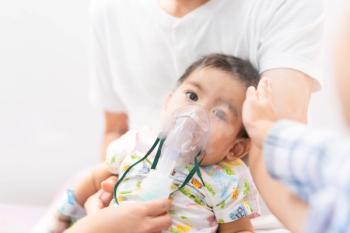
Emerging dermatologic conditions in the presence of COVID-19 pandemic
Growing evidence indicates that COVID-19 impacts more than the respiratory system. Clinicians should keep an eye out for dermatologic conditions that may be associated with the illness.
Pediatric nurse practitioners (PNPs) often evaluate infants, children, and adolescents with a variety of dermatologic presentations that provide supporting evidence for the differential diagnoses and the subsequent final diagnosis. In their article,
The new challenge
It is important for PNPs to become familiar with these newly described dermatologic findings to accurately differentiate these skin presentations from ‘somewhat look-alike’ presentations that are more familiar to all providers in pediatric primary care clinical practice, urgent care centers, or emergency departments. Pediatric nurse practitioners need to recognize these newly identified skin manifestations and the relationship to a diagnosis of COVID-19. The conditions identified by Dr Schmidt and Ms Chen included pseudo-chilblains, erythema multiforme-like lesions, multisystem inflammatory syndrome in children, Kawasaki disease, and other non-specific viral exanthems. The authors provide photographs for each of these conditions. Pediatric nurse practitioners should become familiar with each of these photos to diagnose the dermatologic findings in a timely manner and/or make a referral to a dermatologist or other health care providers, as appropriate.
Research initiatives
The authors discuss the open registry now available, identified as the Pediatric Dermatology Research Alliance COVID-19 Response Task Force (PDCRTF). This analysis of dermatologic presentations in COVID-19 will be a valuable resource for pediatric providers to identify as many presentations as possible for children who are suspected of having COVID-19 even in the absence of positive PCR, antigen, or antibody testing.
Call to action for testing of children
Since the beginning of the COVID-19 pandemic, there have been considerable disagreements about testing for COVID-19. The fact that children are presenting with dermatologic findings that are highly suspicious of being related to COVID-19 and available data showed that many children with these manifestations have tested negative on PCR and antibody testing is a major concern. Were these children living in households where adults were exposed to the virus, and the children were not tested until the dermatologic manifestations were evident? Have children only been tested if they presented with respiratory systems or fevers suggestive of COVID-19?
The lack of a comprehensive national testing plan for adults and children has adversely affected the ability of health care professionals, scientists, and researchers to control many outbreaks that have occurred and are occurring throughout the United States. As children and adolescents return to school, testing is a critical component for the equation of a safe return for the children, adolescents, school personnel, and teachers. Yet, there is no consistent plan for testing. We have already seen some high schools and colleges closing almost immediately after opening and the one commonality has been no testing plan in place. We, as pediatric health care providers, must advocate for a testing plan for children to assure the safety of the children and adolescents, the school personnel and teachers and as they return home each day, for their family members as well.
Newsletter
Access practical, evidence-based guidance to support better care for our youngest patients. Join our email list for the latest clinical updates.










